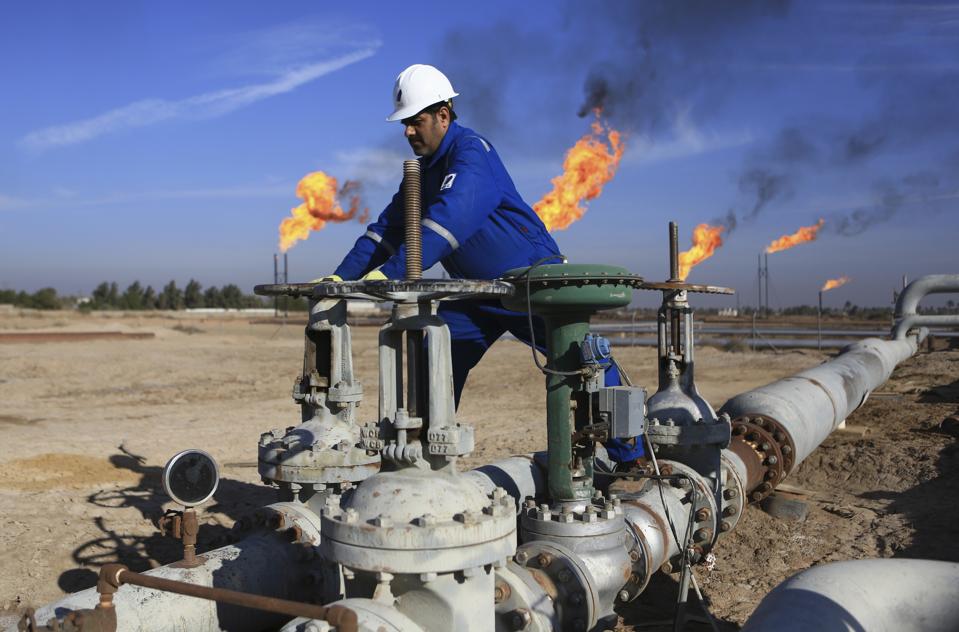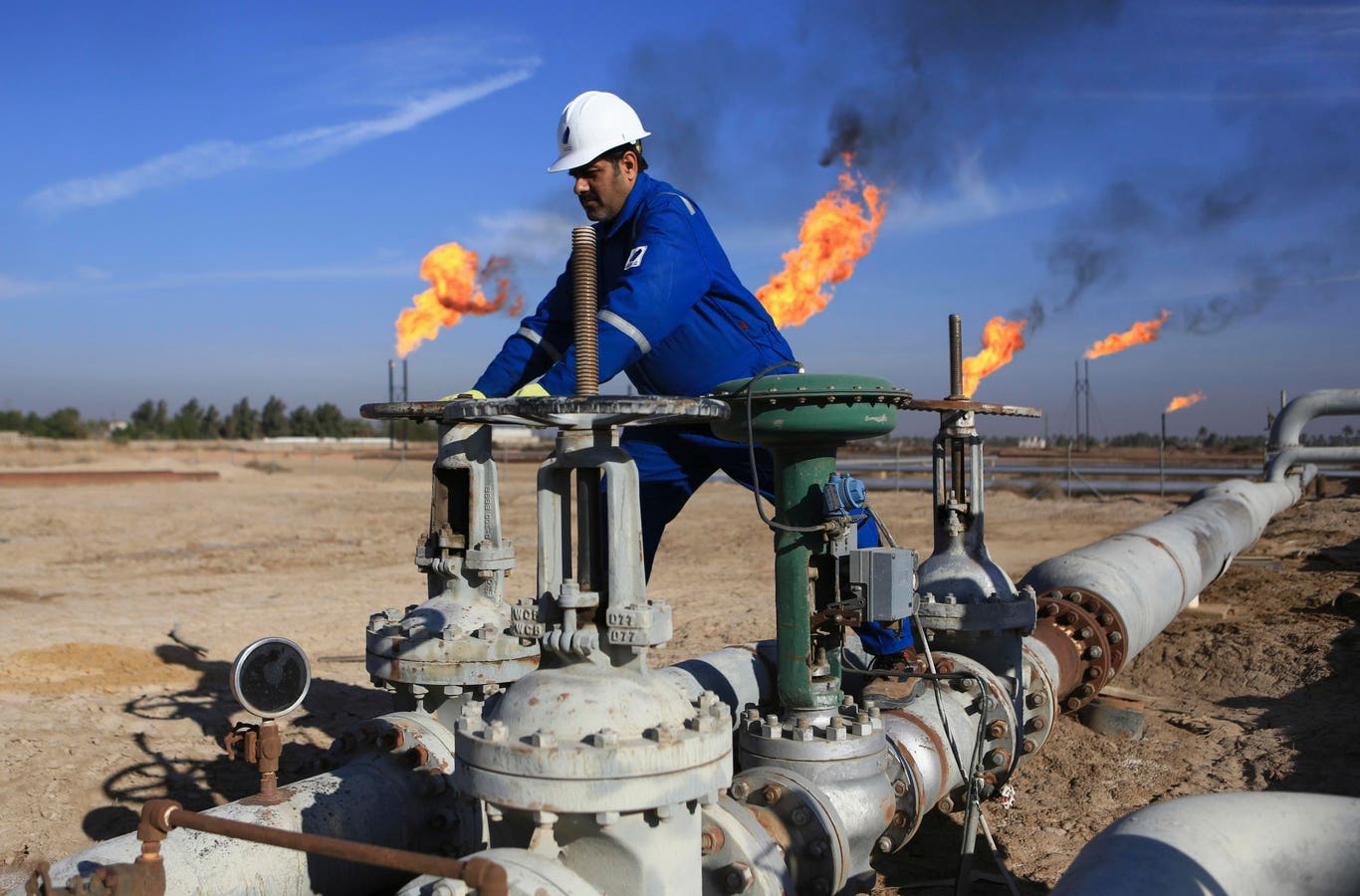
Oil worker in the Nihran Bin Omar field north of Basra, Iraq. (Photo: Nabil al-Jurani)
Copyright 2017 The Associated Press. All rights reserved.
Oil futures posted their steepest weekly decline in prices for over three and a half months, as oversupply concerns dominated trading sentiment for much of the week.
At the close of trading in London on Friday, the Brent front-month futures contract was trading at $64.79 per barrel, up a 1.05% or 67 cents, but still down nearly 6% from last Friday’s brief uptick above $70. The closing price was also the global proxy benchmark’s lowest since June 2.
The West Texas Intermediate front-month contract also suffered a similar slump, barely holding the price floor at $61 per barrel in afternoon trading stateside.
That’s after the market began factoring in another potential production hike by OPEC+, a select group of Russia-led oil producers and the Organization of the Petroleum Exporting Countries (OPEC) spearheaded by Saudi Arabia.
For much of the year, the group has been raising its crude production levels following years of restraint. In its latest move on September 7, OPEC+ decided to return a further 1.66 million barrels per day in production volume. The decision formed part of an ongoing attempt by the group to unwind previously agreed cuts, announced between April and November 2023.
OPEC+ had two previously declared strands of cuts – a 1.65 million bpd cut by eight key members (namely Saudi Arabia, Russia, Iraq, United Arab Emirates, Kuwait, Kazakhstan, Algeria, and Oman), and a further 2 million bpd cut by the entire group in place until the fourth quarter of 2026.
ForbesOPEC’s 2014 Bid To Tame U.S. Shale Failed. Will 2025 Be Different?By Gaurav SharmaForbesDitch Russia’s Oil For More U.S. Sanctions On Moscow, Trump Tells NATOBy Gaurav SharmaForbesSaudi Aramco Profit Dips For 10th Quarter In A RowBy Gaurav Sharma
OPEC+ will next be meeting on Sunday to decide its output for November. But it is expected to hike production further despite oversupply concerns and the fallout from the U.S. Federal government shutdown piling on the existing bearing sentiment.
A Reuters report, citing sources close to the decision, suggested on Tuesday the hike could be much higher than the 137,000 bpd level OPEC+ announced for October at its last meeting. OPEC and Saudi Arabia both declined comment on the report.
Regardless of what OPEC+ does or doesn’t, the market is likely heading for a Q4 2025 and Q1 2026 oversupply scenario. That’s because its production is currently accompanying record levels of non-OPEC, especially U.S., production.
According to the U.S. Energy Information Administration, the nation’s crude production, which hit an all-time high of 13.47 million bpd in April, is still above 13 million bpd.
Non-OPEC production is also being boosted by higher output from Brazil, Canada, Guyana and Norway. Collectively, non-OPEC production growth is likely to rise by 1.4 million bpd this year, according to the IEA.
Even the most optimistic 2025-26 oil demand growth projection of 1.3 million bpd, offered by OPEC, falls short of that non-OPEC production growth figure alone.
It implies OPEC+ is pumping more in the full knowledge that a year-end to early 2026 oil surplus remains a very distinct possibility but that it craves a much a higher market share. As such lower oil prices beckon.
It’s why Brent oil futures have struggled to stay above $70 per barrel levels for any convincing length of time since June, and are down by over 16% on a 12-month basis.
Disclaimer: The above commentary is meant to stimulate discussion based on the author’s opinion and analysis offered in a personal capacity. It is not solicitation, recommendation or investment advice to trade oil and natural gas stocks, futures, options or products. Oil and natural gas markets can be highly volatile and opinions in the sector may change instantaneously and without notice.
